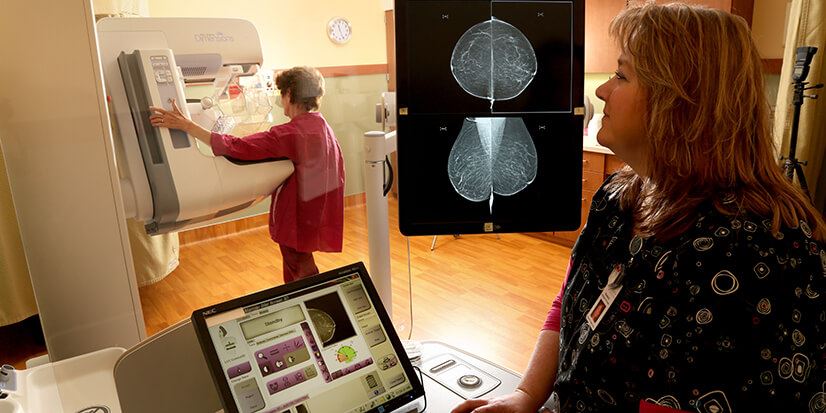Mammography and MRIs in Breast Cancer Screening
- Category: News, Women's Health, General Surgery, Primary Care
- Posted On:

Sauk Prairie Healthcare takes on breast cancer every single month of the year with preventive mammography and other services. But Breast Cancer Awareness Month in October is a perfect reminder to make sure you have the information you need about breast health and our commitment to help.
First things first: Mammograms save lives.
One in every eight women will develop breast cancer in her lifetime. The statistics are scary, but breast cancer is usually very treatable when caught in its earliest stages. A mammogram can detect abnormalities before you’re able to feel them and is proven to reduce breast cancer deaths. Start your routine mammograms at age 40 — or sooner if you have a family history of breast, ovarian or prostate cancer.
Know your mammogram options.
We’re proud to offer the latest technology with 3D mammograms at Sauk Prairie Healthcare. You’ll be asked if you want 3D or 2D. What’s the difference? A 2D (traditional) mammogram takes images of the front and side of the breast, while a 3D mammogram takes images in layers at all angles. As a result, 3D mammography provides better visibility of fine details and abnormalities — and also helps reduce false positives.
Do you have dense breast tissue or a family history of breast cancer? A 3D mammogram may be for you.
Check your insurance before your mammogram.
Not all insurance will cover a 3D mammogram. Be sure to check your coverage with your insurance provider by referring to the “CPT Code” for each option (G0202 for 2D and 77063 for 3D). If your insurance doesn’t cover 3D, you can still have it but will need to pay out-of-pocket for the difference in cost.
You will be informed if you have dense breast tissue.
Dense breasts have more glandular and connective tissue, while low-density breasts have more fatty tissue. Why is this important? Dense breast tissue may make it harder to spot abnormalities on a mammogram and is associated with a slightly increased risk of breast cancer. If a mammogram shows you have dense breasts, you and your doctor will be notified of this in writing so you can talk about your risks and the best screening options for you. Nearly 40 percent of women over age 40 have dense breasts.
Men can get breast cancer, too.
Malignant cancer cells are not as common in the breast tissue of men as in women, but it can happen — especially if there is a family history. While it affects men of any age, it is most likely to occur in those between ages 60 and 70.
Screening vs Diagnostic Mammogram: What’s the difference?
Screening mammograms are for women who have no apparent symptoms of breast cancer, such as breast lumps, bumps, pain, nipple discharge or a history of cancer. You can get a screening mammogram at Sauk Prairie Hospital by appointment (608-643-7274). Diagnostic mammograms are done if something suspicious is found in a screening mammogram or if there may be signs of breast cancer. You should contact your provider to see if a diagnostic mammogram is right for you if you feel a lump, bump, or have pain, nipple discharge or a history of cancer.
Breast MRI Available
As part of our commitment to early detection of breast cancer, Sauk Prairie Healthcare is introducing breast magnetic resonance imaging (MRI). A breast MRI is not an X-ray, but instead produces detailed pictures using a magnetic field, radio waves and computer. It’s intended as a supplement to a mammogram or other imaging to:
- Screen high-risk patients
- Further evaluate abnormalities seen on a mammogram or ultrasound
- Assess the extent of a breast cancer diagnosis
- A breast MRI must be ordered by your physician.
